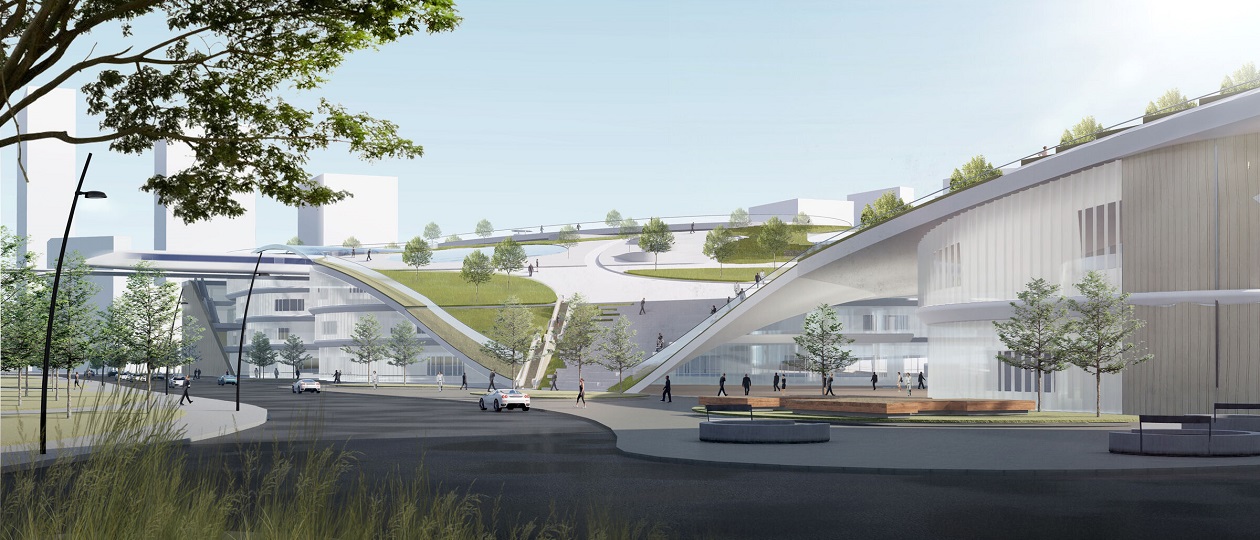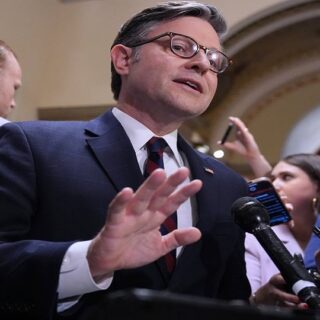
More precisely, it is about the interaction and complementarity of urban and rural territories. The boundaries between them will be blurred, but certainly not to the point of complete “interpenetration” or a kind of social annihilation.
In general, an amazing thing is happening. Even Adam Smith and David Ricardo analyzed the division of labor and economic functions between the city and the village. It’s been about 200 years since scholars and practitioners began to seriously consider the changes that industrialization, including the accelerated industrialization of agriculture that began in the late nineteenth century, brings to the social structure of society. Since the mid-to-late nineteenth century, scholars have been actively studying the social aspects of the relationship between cities and rural areas, including what we now refer to as urbanization. We can recall the contributions of Karl Marx, Emile Durkheim, and Max Weber.
All (social) trends have been clearly defined and are now beyond doubt, regardless of the connotations and political overtones that researchers have attached to them:
– The city creates new social connections and institutions.
– The rural society preserves traditional values.
– Urbanization leads to anomie and individualization.
– There is a migration of people from rural areas to cities.
Marx and his followers viewed the city as a symbol of progress and modernization, while the village was seen as an archaic form of social organization.
According to Marxists, the future communist society would erase the differences between the city and the countryside. How would this happen? Perhaps through the complete absorption of the countryside by the city… This reminded me of the concept of the post-city… However, let’s not get sidetracked! There were also opposing views. For example, Chayanov, the founder of interdisciplinary peasant studies, believed that the future belonged to the “peasant utopia,” which he saw as the true “triumph of socialism.”
With an understandable, verified by more than a century, diagnosis, nevertheless, we still do not have a clear picture, a roadmap for the development of rural areas. as, however, and in general, on the problem of spatial development. When the question arose of accelerated industrialization, systematic study and development of the country’s territory, in 1915 (sic!) under the Imperial Academy of Sciences was established Commission for the study of natural productive forces of Russia (KEPS) under the leadership of Vernadsky. Two years later, a revolution took place, but KEPS continued its work. The famous GOELRO plan (State Commission for the Electrification of Russia), the first unified state plan for the development of the national economy based on electrification in world history (adopted on December 22, 1920), was based on the work of the KEPS Energy Department, which was established in 1916. In 1930, KEPS was reorganized into the Council for the Study of the Natural Productive Forces of the USSR and later Russia. Surprisingly, it actually ceased to exist during the development of the first Spatial Development Strategy of the Russian Federation, barely having time to celebrate its centenary… Currently, SOPs is a division of the All-Russian Academy of Foreign Trade.
The modern village is undergoing a transformation comparable to the Neolithic Revolution. The approach to this issue requires the same level of seriousness as the scientific justification of the distribution of productive forces a century ago.
Depopulation on the one hand and excessive concentration of people and resources on the other, the gap in quality of life and services, are becoming not only factors of demographic ill-health, social insecurity of a part of the citizens, but also a factor affecting the national security of the country.
To be fair, a number of documents have recently begun to appear conscious approaches to the topic. In the recently adopted Spatial Development Strategy of Russia until 2030, a new concept has been introduced: Supportive Settlements (SS), which become growth points for the surrounding territories and an important element of the country’s infrastructure and economic framework. Their key functions include:
– Providing residents with basic social services (medicine, education, and culture);
– Creating infrastructure for economic activity;
– Reducing migration from rural areas to large cities;
– Forming a sustainable settlement system in regions with low population density.
Let’s add that the accelerated development of rural areas and the improvement of the quality of life in villages and small towns are the only way to increase the birth rate in the country.
Methodological recommendations have been issued for the selection criteria of Basic Settlements (The concept of a Basic Settlements includes both large urban agglomerations and small towns and rural settlements that provide a full range of services. The list includes settlements where residents are engaged in ensuring national security and maintaining critical infrastructure. — Editorial), and a unified list of Basic Settlements is being created. However, there is still no clear understanding of the boundaries and objectives of this new spatial development institution. We are just at the beginning of developing tools and establishing cooperation between Basic Settlements both vertically and horizontally. What role do they play for the villages they are responsible for? What services do they provide? And is this all?
There is currently a fairly dense and productive discussion on this topic in the professional community.
In what direction will the settlements themselves change? What will their “function” be in the near future, and what will they specialize in?
Modern research identifies several key areas:
– Smart villages — the concept of smart villages with a developed digital infrastructure.
– Rurbanization — the process of merging urban and rural lifestyles.
– Agrotourism as a driver for the development of rural areas.
– New type of eco-villages with an emphasis on sustainable development.
But not everyone will be able to fit into the new reality. In some areas, the “depressive village” scenario will continue, characterized by population outflows, further degradation of infrastructure, and reduced social services.
We need to be prepared not only for the development and relaunch of certain settlements, but also for their rehabilitation. This can include not only “unpromising” villages, but also cities. It is important that this process is managed and involves the involvement of specialists. The population should not be affected during such procedures. Why is this important? It is not possible to spread high-quality infrastructure and services evenly across a vast country. Unfortunately, there are not enough resources available. It is all the more important to provide the highest possible level of development for most territories at the first stage, but to choose territories/regions for pilot projects of “advanced development”. They can be used to test the implementation of the most modern technologies and approaches to sustainable development, and the harmonious interaction between the city and the countryside:
1. Digital platforms:
– Availability of fast internet throughout the country.
– Applications that connect farmers with urban consumers.
– Technological platforms that increase productivity, yield, and automation of production, as well as the preservation of agricultural products.
– Active use of telemedicine, educational digital platforms, high-quality cultural digital content, etc. in rural areas.
2. Transport innovations:
– Transport solutions that reduce the movement of rural residents to cities and vice versa (high-speed public transport, introduction of unmanned transport systems, both ground-based and aerial)
– Autonomous electric trucks and UAVs for agricultural logistics and delivery of products to consumers.
3. Energy autonomy:
– Small settlements, especially remote ones, will increasingly rely on self-sufficiency through renewable and autonomous energy sources.
4. Quality of life:
– New transport technologies, innovations in housing, and the internet are creating a surge in the value of rural life.
5. New rural employment opportunities:
– Remote work and “digital nomads.” More people in developed countries are willing to move to rural areas, both temporarily and permanently. There are even more people who want to do this.
– Agrotourism. In Italy, up to 18 percent of farm income comes from tourists. The farm-stays market is growing in almost all developed countries.
– New craftsmanship. Whole craftsmanship clusters are being created in rural areas, some of which are focused on tourists and others on the sale of craft products, including through digital platforms.
In the future, through a specially created scientific and educational program, the best practices can be implemented throughout the country.
Cities, while dictating their conditions to the countryside, are actively developing rural areas directly. These are the so-called “suburbs,” which are characteristic of megacities on all continents. In our country, they are also known as “summer residents.” This is a unique phenomenon that is often overlooked by the government.
Nevertheless, in Russia, there are 12.5 million garden plots and 540,000 garden cooperatives by 2025. What is there to comment on?!
But agriculture is returning to cities and directly to vertical farms. City farming is perhaps the most promising area of agriculture. Revolutionary changes are taking place in this field every year. For example, Dutch experts plan to grow wheat in indoor greenhouses in the coming years, while the Chinese plan to grow rice. This is expected to be economically efficient. What can we say about traditional garden and berry products…
It seems that we are rapidly entering a qualitatively new model of interaction between the city and the countryside, where:
– Urban technologies serve rural development
– Rural values enrich urban culture
– Borders become a convention rather than a barrier
The future lies in the symbiosis of technologies that erase borders, in a new economy where the value of land is measured not only by its yield, and in a redefined demography where children are born not out of necessity but out of desire. Where will you build your future — calmly and confidently?





